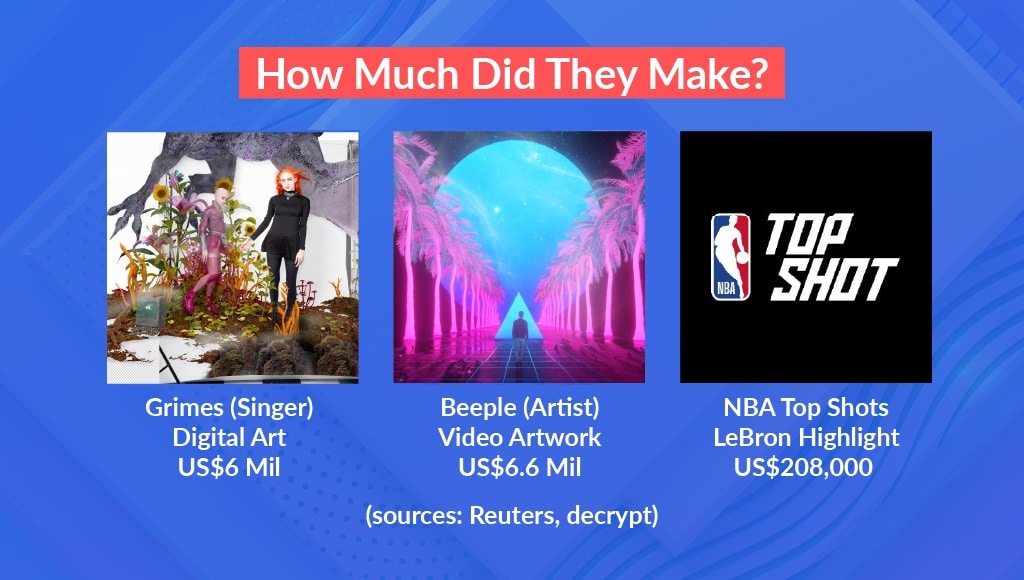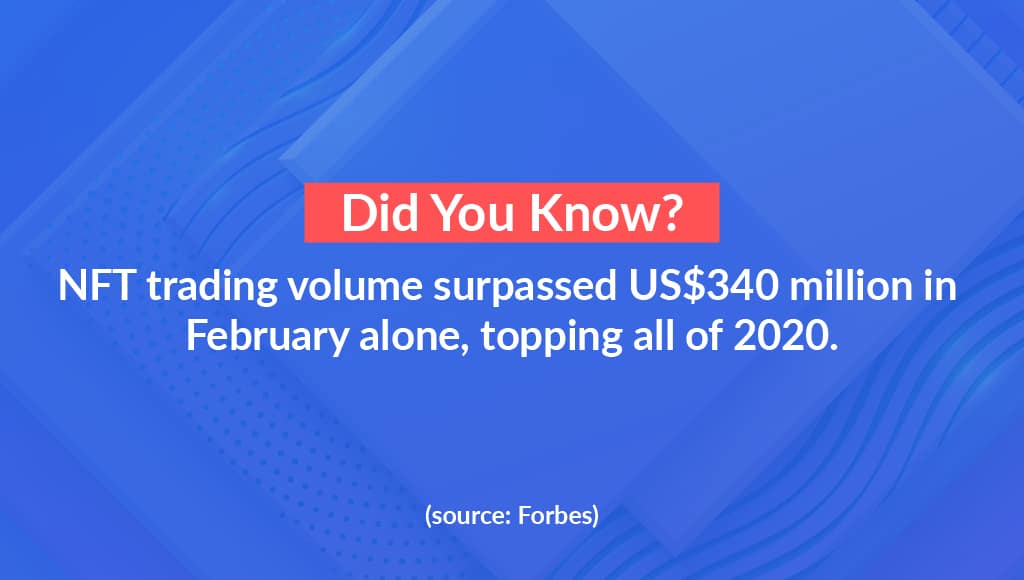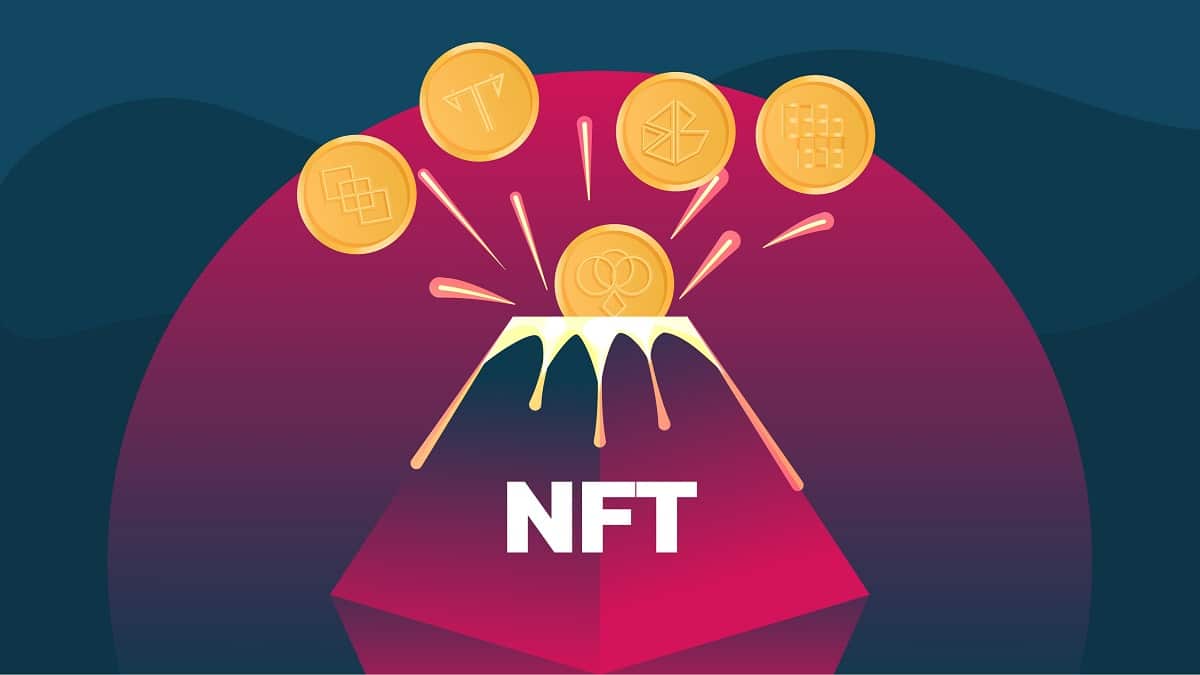If you’ve ever been on the internet in the past 10 years, you will have come across the iconic meme of the grey feline with a Pop-Tart body zooming through space, or better known as Nyan Cat. Well, that GIF has just been auctioned off for a whopping US$590,000 by the meme’s creator.
(source: Businessinsider)
How did a free and publicly accessible meme get sold for a fortune? The answer is through NFTs, or the newest cryptocurrency craze – a one-of-a-kind digital asset that cannot be replicated or replaced.
Despite being released in 2017, NFT’s have exploded in popularity the past couple months, with collectors, creators, and investors scrambling to get in on the virtual items that only exist online.
So, what exactly is an NFT, and why now? Read on for the low-down on the crypto buzz.
Table of contents
What is an NFT?
An NFT is a non-fungible token that exists on a blockchain, with the same digital ledger technology as cryptocurrencies like bitcoin.
But, here’s where it differs.
Most bitcoin is fungible, meaning that it can be easily exchangeable, like cash. However, NFTs are non-fungible, which means they are completely unique and not easily exchangeable.
When you purchase an NFT, you get access to the asset, and the ownership of the asset – which is authenticated by blockchain and unerasable. This means it’s yours, and only yours.
Pretty simple, right?
So while this renders them pretty much useless as a currency, its perceived value was realised in the form of digital art, surfacing in many forms such as images, music, film, and animations.
Nyan Cat is just one of many NFTs to be sold recently, with singer Grimes amassing US$6 million from hers, and artist Beeple flipping his 10-second video for US$6.6 million.
This concrete idea makes it easy for non-crypto people to understand, contributing to its massive cross-over appeal and explosive popularity.

Why would people pay for this?
Much of the conversation surrounding NFTs is becoming the future of fine art collecting. Like physical art purchased at a Sotheby’s auction, investors believe NFTs will appreciate in value – which lies in the item’s scarcity and authenticated ownership.
For buyers, blockchain provides a certificate of ownership and authenticates the item as truly one-of-a-kind, unlike traditional things that can get forged and replicated. Think of an NFT as Mona Lisa, except it only exists in the digital realm and is protected by a burly security blockchain called Ethereum.
There is a catch though – people can still ‘right click’ and save the piece of digital work. The difference is, you get the bragging rights as the owner. To put it simply: anyone can purchase a Mona Lisa print, but only you can own the original.

Rise of the Creator Economy
Another major benefit of these hack-proof, virtual tokens is returning power and control to the artist. Even before the days of the interwebs, artists have struggled to reap the benefits if their work has gone up in value.
Now, NFTs have a function where artists receive anywhere from 2.5% to 10% of the sale price each time the token bounces to a new owner. Content creators get paid each time their content is distributed on the internet and allows them to get a more significant cut of profits instead of selling through an art gallery or auction.
But, the possible benefits don’t stop there.
Ticket-based NFTs can allow parties like festival promoters to split the revenue amongst the DJ, caterers, landlord and more. The payments would be confirmed and authenticated via blockchain on the spot, opening a window of opportunity for creatives to receive fair income.
NFTs: Fad or Future?
It’s not a stretch to say blockchain technology has revolutionised ownership. As the world shifts to increasingly virtual environments, NFTs have solved something that’s never been tackled before – and that’s digital scarcity.
The possibilities are not limited to the art world, and digital ownership, once thought to be untrustworthy and non-existent, ceases to become an issue with NFTs.
Christie’s has become the first major auction house to sell an NFT-based artwork. The music industry is already making strides – with Kings of Leon releasing an NFT album, and Mark Cuban betting on the film industry as the next stop.
But, NFTs are not without its criticisms. The nature of NFTs makes it no different than the physical art world. It encourages buyers to cash in on artists at the peak of their popularity, not to mention the novelty factor encourages extreme pricing.
However, if this is anything like the web page boom in 1996, the possibilities are just beginning. Whether it’s a bubble that will soon pop, or the start of a trillion dollar industry, one thing is for sure – only time will tell.
What’s your opinion on the future of NFTs? Comment down below!









